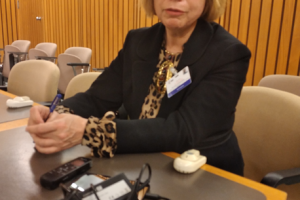
The recent completion of the fourth round filling of the Grand Ethiopian Renaissance Dam (GERD) marks a significant milestone for Ethiopia. It is regarded as a big win for Ethiopia, affirming their strength as a nation and the country’s commitment to achieving ambitious development goals.
The dam signifies Ethiopia’s self-reliance and ability to embark on mega-infrastructure projects without external assistance or influence. It also demonstrates the independence of the country proving that Ethiopia can meet its people’s energy needs without relying on other countries. Besides, the flagship project represents Ethiopia’s determination to accomplish its development goals.
The dam’s construction represents a much-needed boost in the country’s efforts to achieve its national development goals. The dam is expected to provide much-needed electricity to millions of Ethiopians who live in darkness. There is no gainsaying the fact that the country has been striving towards rapid industrialization in recent years, and the dam will play a pivotal role in the country’s industrialization drive providing affordable and reliable energy.
The dam has the potential to become a major source of revenue for the country with Ethiopia having the opportunity to export surplus electricity to the region and beyond earning more foreign exchange. Needless to say, the dam’s construction exemplifies Ethiopia’s achievements in the field of mega-infrastructure construction, with the country becoming a symbol of modernization and development.
The country is attracting both local and foreign investors who view the country as a haven for investment, with numerous opportunities in different sectors, including renewable energy and manufacturing. In addition, the dam will help in strengthening economic integration across the region. By generating large amounts of electricity, the project has the potential to bring about regional economic development, with countries in the region accessing cheap and reliable energy, which, in turn, promotes investments and economic growth.
The GERD has been a source of pride for Ethiopians with the dam being a powerful symbol of the country’s sovereignty, self-reliance, and determination to achieve its development goals. The project is expected to bring significant economic and social benefits to Ethiopia, with the country cementing its position as a major player in the region.
The dam has been a triumph of perseverance in the face of unrelenting external pressures. Ethiopia’s resilience in the face of numerous challenges has demonstrated the country’s ability to rise above external factors and achieve its objectives. What’s more, the project is a testament to Ethiopia’s resolve to become self-sufficient and rely on its ingenuity and resources. The country has taken this route believing that becoming more self-sufficient will yield significant dividends in the long term.
The dam also highlights the transformative power of mega-infrastructure projects. Infrastructure development can serve as a significant catalyst for economic growth, regional integration, and political stability. The dam serves as a powerful symbol of what can be achieved when nations come together to pursue common goals.
The GERD is just one aspect of Ethiopia’s greater development agenda, a journey that still has a long way to go. Now is the time for Ethiopia to cement its position as a hub for investment and innovation, leveraging the GERD to spur development across various sectors of the economy. The project is a testament to Ethiopia’s commitment, resilience, and its desire to achieve economic growth and development.
Ethiopia must remain vigilant in safeguarding the project’s gains, ensuring equitable distribution of benefits while embracing the project’s potential for regional integration. As Ethiopia continues on its development journey, the GERD will remain a powerful symbol of what can be achieved when a nation resolves to pursue its development goals with determination, resolve and a long-term vision.
The GERD is a vital component of the broader African Union’s Infrastructure Development Plan aimed at improving the continent’s connectivity. One of the most salient benefits of the GERD is economic integration. The construction and the operation of the dam will require a significant amount of technical and human resources, making it a valuable prospect for job creation, skill development, and technological advancement in the region.
The GERD’s construction has also elevated Ethiopia’s reputation in Africa and globally. Ethiopia now stands out as the leader in driving Africa’s infrastructure development dreams forward. The GERD’s construction has highlighted the importance of developing infrastructure projects as a viable sector for regional integration and collaboration. The project has proven that infrastructure development can serve as a catalyst for regional integration.
The GERD construction highlights the need for coherent strategies geared towards bringing about collective development and growth that the African continent has yearned for decades. It is a significant step towards realizing the continent’s aspirations of becoming self-sufficient and globally competitive, and the future looks bright.
The GERD project is a critical infrastructure project that will provide Ethiopia with ample electricity, boost economic growth and regional integration, and contribute to the development of the African continent. It is crucial that all parties involved seek a peaceful and negotiated resolution to the GERD issue. Ethiopia has repeatedly acknowledged that it has no intention of causing harm to downstream countries or their populations and has always stressed the importance of reaching a mutually acceptable agreement on the use of the Nile waters.
Although a lot of controversy has surrounded its construction, the dam’s significance cannot be undermined. The GERD is expected to provide cheap and abundant electricity, which will not only improve the living standards of Ethiopians but also propel the country’s economic growth. With widespread electrification, businesses will be able to operate efficiently, leading to an increase in employment opportunities and income levels.
The GERD will provide a reliable source of domestically generated energy, helping to stabilize Ethiopia’s power supply. Ethiopia is also positioning itself as a major exporter of electricity, with potential export markets including Kenya, Djibouti, and Sudan.
It is also an emblem of Ethiopia’s journey to self-reliance and economic development. Although the dam’s construction has been a costly and lengthy process, it reflects the country’s determination to harness its natural resources and embark on a path of sustainable development.
The Grand Ethiopian Renaissance Dam (GERD) is a project that ensures the mutual benefits of the regional and riparian countries, Foreign Affairs Spokesperson Meles Alem told Ethiopian News Agency.
Meles said that the dam has great significance for regional integration.
According to him, the dam is a power plant built with the wealth, knowledge and labor of Ethiopians who have been steadfastly struggling for the accomplishment of the project.
The dam has addressed the quest of a generation and the successful completion of the fourth and final round filling of GERD is a gift for Ethiopians on their New Year, the spokesperson elaborated.
Meles noted that Ethiopia has been under immense pressures because of the dam; but succeeded in overcoming challenges by firmly sticking to principle and commitment.
Even if the dam is being built by Ethiopians internal capacity and in their sovereign territory, the benefit of the dam is beyond the nation, the spokesperson underlined.
As a demonstration of one of the benefits of the dam, he cited the power integration works Ethiopia has been pursing with the neighboring countries that will in turn strengthen economic integration.
In addition, the dam has huge benefits in protecting for the lower riparian countries from sediment, floods and ensuring sufficient water flow, Meles said.
Hence, he underlined that the dam is a project that should be a source of cooperation instead of conflict as it ensures mutual benefits for regional and lower riparian countries.
The fourth and final round filling has been conducted based on the policy of sovereignty of Ethiopia and to enable 65 million citizens access electricity, Meles noted.
Recalling that Ethiopia had not signed any agreement regarding Abay River, the spokesperson added that the country will not be stopped from its development efforts by those one-sided colonial era agreements.
Meles, who said that Ethiopia enjoys good relationship with the riparian countries beyond the Grand Ethiopian Renaissance Dam, stated that Ethiopia will further strengthen collaboration with the countries on development and shared benefits of the respective peoples as well as regional issues.
BY ADDISALEM MULAT
The Ethiopia Herald September 14/2023





